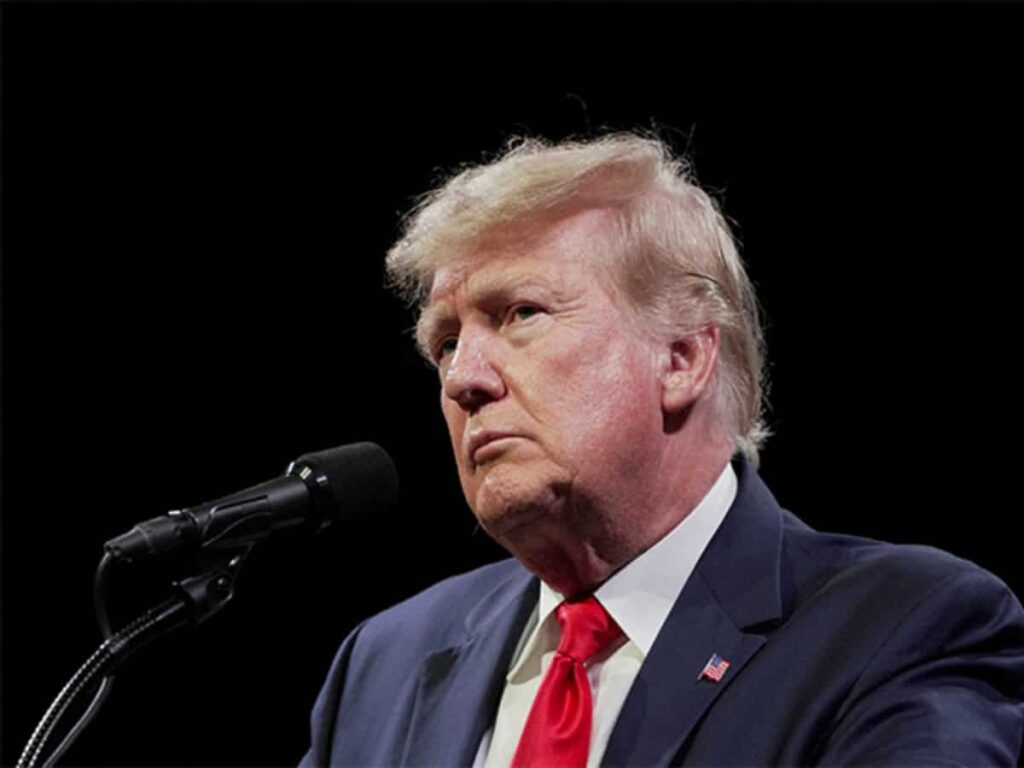US President Donald Trump has announced sweeping reciprocal tariffs, including a 26 per cent ‘discounted’ tariff on India, citing high levies imposed by countries on American products. Declaring April 2, 2025, as “Liberation Day,” Trump emphasised that this marks a turning point in US trade policy, aiming to correct decades of trade imbalances.
In a high-stakes move, the White House revealed that India charges 56 per cent tariffs, including curr8ency manipulation and trade barriers, prompting the US to impose a 26 per cent counter-tariff. The announcement has triggered stock market turmoil, with analysts weighing in on the potential impact on Indian exports, GDP, global trade and US recession risks.
Here’s what experts have to say about the fallout from Trump’s latest tariff escalation.
Madhavi Arora, Lead Economist, Emkay Global Financial Services
“Trump announced a baseline tariff of 10% on all imports (effective 5th Apr), with specific “reciprocal” tariffs on multiple countries (effective 9th Apr). India faces a 26% tariff, with China at 54% now (20% previously imposed + 34% announced today)
Trump seems to have used the respective trade deficit of each country with the US as the basis for reciprocal tariff calculations, rather than the actual level of tariffs imposed by each country
Importantly, sector-specific tariffs will also be imposed, but those sectors will not be part of the country-level tariffs. For eg, Indian autos will face a 25% tariff, imposed on all autos globally, and not the country-level tariff of 26% (or 26% +25%).
Sectors such as pharma, semiconductors, copper, lumber, gold, energy and minerals will all be spared reciprocal tariffs. Mexico and Canada will also not face additional tariffs (25% already imposed previously, with goods under USMCA exempted).
Arnab Mishra, Hdfc Security
Global stock markets plunge after Trump announces harsher-than-expected tariffs. President Donald Trump laid out the U.S. “reciprocal tariff” rates that more than 180 countries and territories, including European Union members, will face under his sweeping new trade policy.
Trump, who referred to April 2 as “Liberation Day”, made the announcement from the Rose Garden of the White House in an event attended by steel and auto workers.
A minimum 10% tariff on all exporters to the U.S. and slap additional duties on around 60 nations with the largest trade imbalances with the U.S. That includes substantially higher rates on some of the country’s biggest trading partners, such as China — which now faces a tariff of at least 54% on many goods — the E*uropean Union and Vietnam*.
However, Canada and Mexico have been spared from additional tariffs. India, facing 26% tariffs, has been subject to what Trump describes as ‘discounted’ reciprocal taxes.
The fine print of President Trump’s executive order indicates that reciprocal tariffs won’t apply to autos, semiconductors, steel, aluminium, copper and other products already targeted or potentially still to be targeted by sectoral tariffs.
Vikram Kasat, Head – Advisory, PL Capital – Prabhudas Lilladher
“April, 2 2025, will forever be remembered as the day American industry was reborn, the day America’s destiny was reclaimed, and the day that we began to make America wealthy again – Trump The Tariffs Trump unveiled were worse than what the market had established as a worst case scenario
Large Tariff shocks threatens US and global recession If these policies, if sustained – would likely push the US and Global Economy into recession this year.
In very general terms, Canada and Mexico have got off lightly, while those in Asia, particularly China and Vietnam, have been hit hard. The European Union and Japan sit somewhere in the middle. Just the hope – no one retaliate Since If you retaliate, there will be escalation. If you don’t retaliate, this is the high water mark”
Sujan Hajra, Chief Economist & Executive Director, Anand Rathi Group
The US’s new reciprocal tariff regime announced on April 2, 2025, could shake up global trade, but India emerges relatively well-placed. With lower tariff rates than key peers and a modest impact on exports, India may even gain from supply chain shifts. Domestic growth, inflation, and equities remain on solid ground—turning a global trade headwind into a potential strategic tailwind.
US Imposes Reciprocal Tariffs: Beginning April 5, 2025, the United States will implement a blanket 10% tariff on imported goods. From April 9, the country will switch to a reciprocal tariff structure, imposing import duties equivalent to the tariffs levied by its trading partners on US exports. For India, this implies a 26% tariff, comparable to the EU (20%) and Japan (25%), but significantly lower than for China (54%), Vietnam (46%), Sri Lanka (44%), and Bangladesh (37%).
Source:https://www.zeebiz.com/world/news-us-president-trump-hits-india-with-26-percent-reciprocal-tariff-global-markets-react-global-trade-tensions-stock-market-crash-us-economy-slowdown-economic-uncertainty-what-expert-says-353724

